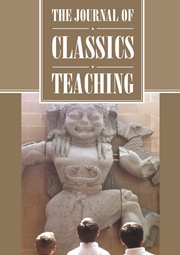
A Cultural History of the Sea in Antiquity is the first in a collection of six volumes exploring how the sea has shaped our cultural history. Curated by the expert in interdisciplinary oceanic studies Margaret Cohen, the collection is unique in its broad scope and, at least in the case of this volume, a success in reframing our historical perspectives around the sea.
This volume deals with Antiquity and, although further areas are discussed, e.g. West Africa and China, the focus is the Mediterranean with particular attention to the Greco-Roman world. The range of study covers over 2000 years of history and encompasses other Mediterranean peoples too, including the Phoenicians. Thus, the classical world can be observed through a wider lens and understood in its complete geographical and cultural context.
I read the book as a stand-alone, but chapter titles are shared across all volumes in such a way that readers can either look at different aspects of a period within one volume, or follow a theme as it has been threaded across the books. The sections are as follows: ‘Knowledges’, ‘Practices’, ‘Networks’, ‘Conflicts’, ‘Islands and Shores’, ‘Travelers’, ‘Representations’ and ‘Imaginary Worlds’. In order to explore each of the topics, relevant disciplines are brought together: anthropology, archaeology, politics, literature, philology, geography and geology, to name just a few, are given space and consideration in conjunction across the essays. In this way, the tangible aspects of the material world and the more intangible cultural ideas are explored side by side, inviting us to reconsider familiar disciplines by adopting a new perspective from and towards the sea, and discovering new links between them. For example, in the ‘knowleges’ chapter, oceanography and philosophy come together to explain changing worldviews.
Considering this is a collection of essays, Marie-Claire Beaulieu has done a wonderful job of including a variety of voices to present original research in a cohesive manner. The only inconsistency that classicists may notice is that while some essays contain quotes in Greek, with and without translation, others use English translations only, and a final one includes just a transliteration of the Greek. However, given the meticulous inclusion of references, this is no impediment to locating the original material or finding translations. The book, in fact, stands out for its extensive and detailed references to both modern scholarship and classical sources, as well as a broad bibliography to assist with further study. The list of well-chosen illustrations also contains useful and relevant detail, and has been carefully selected.
This volume is essential for those wanting to undertake research in oceanic studies but also reads very well and can be enjoyed almost as a work of popular history. Secondary-aged students would also benefit from reading individual essays as part of enrichment programs or for supplementary reading. Finally, the quality of design and printing enhance the pleasure of reading the book: this will be a very fine addition to any classical library.


